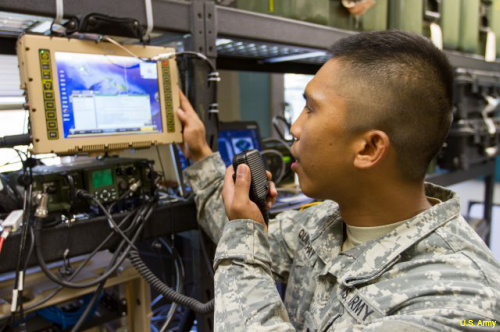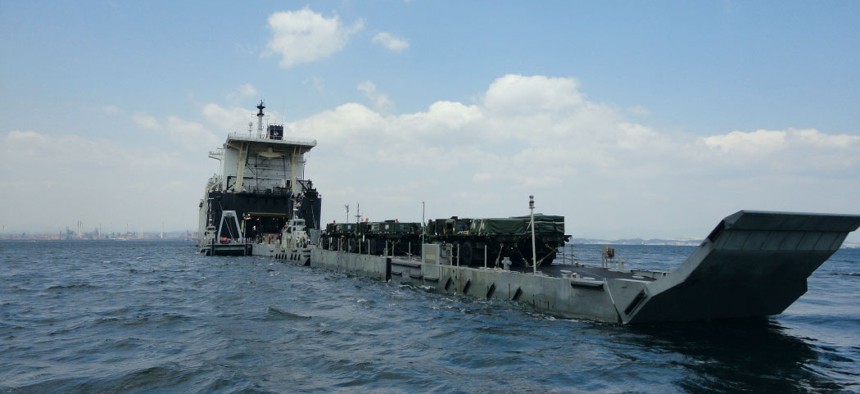Army, Navy display joint communications in Hawaii
Combining the Navy's global MUOS satellite systems with Manpack radios and the Army's Joint Battle Command-Platform could fill gaps in the Pacific.
Military leaders have suggested that most, if not all, future military conflicts will involve joint operations, whether in the form of a mix of the U.S. military services or U.S. forces with coalition partners. The Army and Navy recently demonstrated the kind of operability those operations would rely on with a land/sea exercise across 200 miles in Hawaii.
Soldiers inn five locations used the Army's Manpack Radios and the Joint Battle Command-Platform (JBC-P), which tracks friendly forces, along with the Navy's Mobile User Objective System (MUOS) waveform to talk, text, share data and track the progress of an Army Logistics Supply Vessel, the Army said in a release.
The Army said the exercise, conducted from Fort Shafter, Hawaii, shows how joint communications could be provided throughout the Pacific.
"As the Army focuses more on the Pacific Theater, it is critical for soldiers in that region to be able to communicate back to land when they are traveling thousands of miles at sea," said Col. James P. Ross, Army project manager for Tactical Radios. "The Manpack Radio and MUOS waveform, along with JBC-P, enable soldiers to not only share enroute mission command information, but to also know where friendly and enemy forces are located."

A soldier conducts data and chat communications via MUOS from Schofield Barracks, Hawaii.
MUOS is a fairly new constellation of satellites designed to provide more than 10 times the capacity of the current Ultra High Frequency (UHF) system to users aboard ships, submarines aircraft and ground vehicles. The fourth MUOS satellite was launched in September 2015, giving the system virtually global coverage. A fifth satellite, which will serve as a spare, is expected to be launched sometime this year. The system, which also has four ground stations around the world, will fill communication gaps that can exist across the expanse of the Pacific.
"MUOS fills an urgent need for additional tactical satellite within the Pacific," said Lt. Col. Joseph Pishock, 25th Infantry Division (ID), G6, communications officer. "There currently are not enough channels to support units deployed into the Asia-Pacific Theater reliably. With MUOS, we can conduct simple chats, send small images and even use it with other systems to transmit position location information."
The exercise also provided an opportunity to show how the Army’s two-channel Manpack radios can work with the system, running the MUOS beyond-line-of-sight waveform on one channel and the Soldier Radio Waveform on the other channel. Even messages that might travel 100,000 miles between the various ground and satellite replays are delivered in less than a second and a half, The Army said.
Data and graphics, meanwhile, are displayed on JBC-P, which makes use of the Blue Force Tracking II satellite for situational awareness and friendly force tracking. That enabled commanders to track the supply vessel’s progress.




